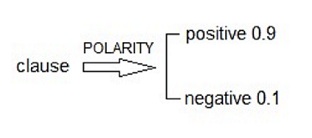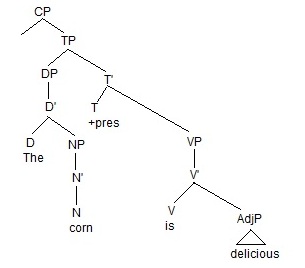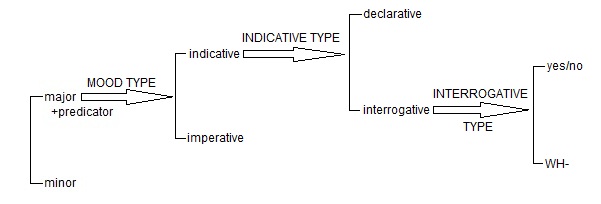Entertaining multiple hypotheses is difficult. We tend to make up our minds about things long before we’ve sifted through the evidence and the arguments about a specific issue. For example, I have long been skeptical about Chomskyan linguistics and have always held a deep regard for any linguistic theory that was not Chomskyan. However, my skepticism toward one and preference for the other did not result from long hours of objective study. My disposition resulted from a general distrust of positivistic approaches to language, my general skepticism about the existence of Universal Grammar, and, on the other end, my general fondness for linguists who took meaning and social function into their accounts of grammar.
The linguist who inspired me the most was Michael Halliday. His systemic functional grammar was the first linguistic theory I tried to understand. The interesting thing is, however, that Halliday never comes out and positions systemic functional grammar against generative grammar, the minimalist program, or any other Chomskyan theories. I can’t remember what essay precisely, but somewhere Halliday makes the point that his is simply a different approach to the study of language. It neither denies nor affirms the generative approach, with its goal of modeling UG. Systemic functional grammar simply presupposes different things about language and systematizes different aspects of it.
Now that I’m studying generative grammar, I am coming to realize that Halliday is quite right not to position his theory against Chomsky’s. It’s different, not necessarily opposed. It has different goals, assumptions, and frameworks. Probably the most important difference can be summed up this way: while generative syntax does not try to link its theories with phonology on one hand or semantics and pragmatics on the other, systemic functional grammar is an attempt to make sense of all dimensions of language as they work and evolve together, from phonetic production to pragmatic context.
Another difference between Halliday’s and Chomsky’s linguistic theories, however, is the framing of language as structure versus system. Here’s how Halliday puts it in his Introduction to Functional Grammar:
Structure is the syntagmatic ordering in language: patterns, or regularities, in what goes together with what. System, by contrast, is ordering on the other axis: patterns in what could go instead of what . . . Any set of alternatives, together with its condition of entry, constitutes a system in the technical sense.
Halliday gives the example of positive/negative polarity in a clause. A clause is either positive (“Ich liebe dich”) or negative (“Ich liebe dich nicht”); statistically speaking, 90% of clauses will be positive, 10% negative; this system of entry points, choices, and probabilities forms the basis of systemic functional grammar:
Halliday continues his differentiation between systemic and generative grammars:
A text is the product of ongoing selection in a very large network of systems – a system network. Systemic theory gets its name from the fact that the grammar of a language is represented in the form of system networks, not as an inventory of structures. Of course, structure is an essential part of the description; but it is interpreted as the outward form taken by systemic choices, not as the defining characteristic of language. A language is a resource for making meaning, and meaning resides in systemic patterns of choice.
In other words, while generative grammar seeks to model the computational steps our brains make in order to generate every possible sentence in a language, systemic grammar seeks to describe the myriad systems of choice (from phonemic to semantic) that work together at different but connected levels to make meaning with a given utterance.
Thus, generative grammar takes into consideration things like mood and tense while developing its theories, but the endgame is to model the mental structure of a grammatical utterance, including the moves and transformations it undergoes during computational brain processes:
Systemic functional grammar, on the other hand, models the nearly instantaneous choices that unfold in time when someone utters something. With each step into the system, each choice further limits future choices until a speaker is left with a possible utterance, like “Is there any corn left?”
It’s not quite true to say that the approaches are incompatible, which implies necessary contradictions within their theoretical frameworks. It’s better to say that we’re dealing with the apples and oranges of linguistic theory. Of course, one must choose to work in one domain or the other, but, at the moment, it’s quite possible to entertain both theories in my mind without making any decisions about which one is “right” or “better.” It’s a good exercise in learning to see the beneficial and the problematic, the good and the bad, of two divergent theories.
As I said at the beginning, entertaining two hypotheses is difficult . . . but it’s worthwhile to try.




This sentence “while generative syntax does not try to link its theories with phonology on one hand or semantics and pragmatics on the other” is false. That is a huge portion of generative linguistics. Syntacticians consider their work, rightly so as doing precisely this.
The following is also false from Halliday
Structure is the syntagmatic ordering in language: patterns, or regularities, in what goes together with what. System, by contrast, is ordering on the other axis: patterns in what could go instead of what . . . Any set of alternatives, together with its condition of entry, constitutes a system in the technical sense.
See Newmayer or Chomsky’s Beyond Explanatory Adequacy
what are the central tenets of systemic functional grammar
Why there is no documentation to Haliday’s quotations
As I wrote in the post, all quotes are from Halliday’s Introduction to Functional Grammar. Most of the quotes are from the first chapter or two.
The inter-levels relationship of systemic functional grammar. discuss?
Well, if you want a lot of detail, I recommend buying a copy of An Introduction to Functional Grammar . However, I will try to write something about the relationships across the scales of grammar . . .
You dont discuss the inter-levels of relationship